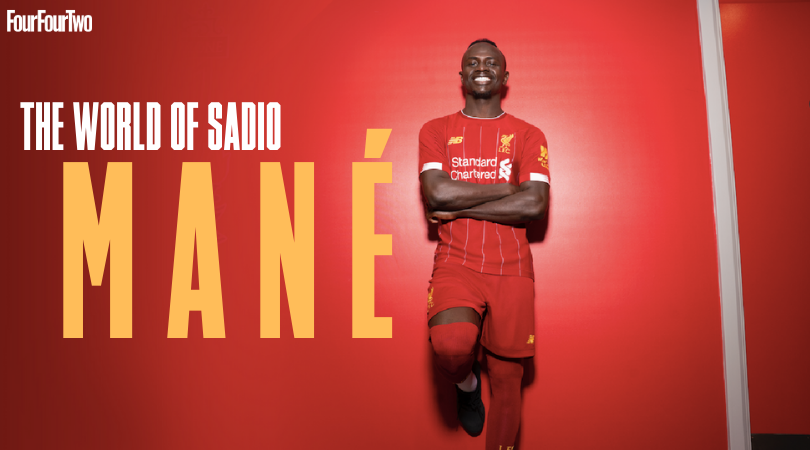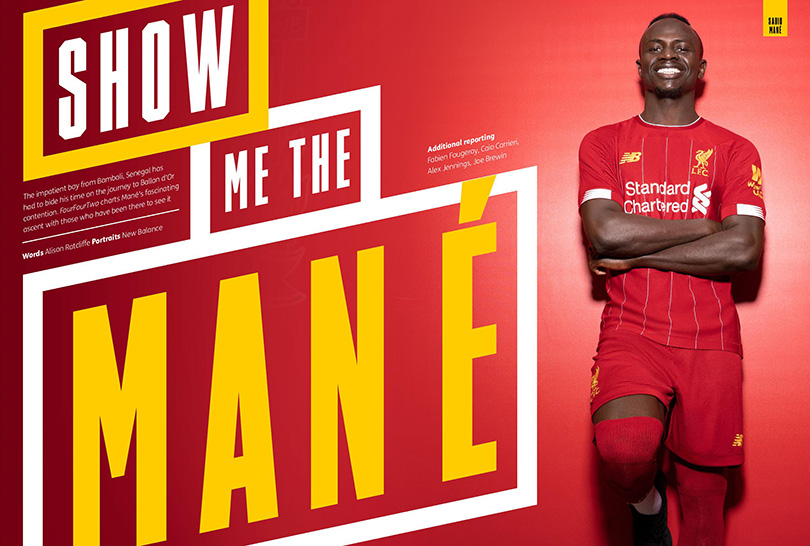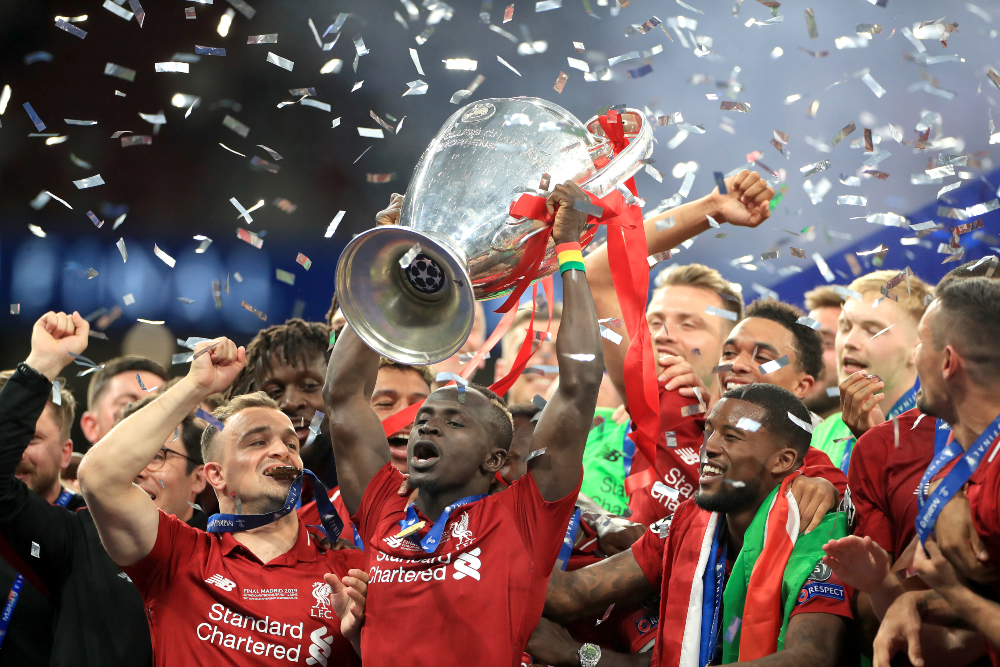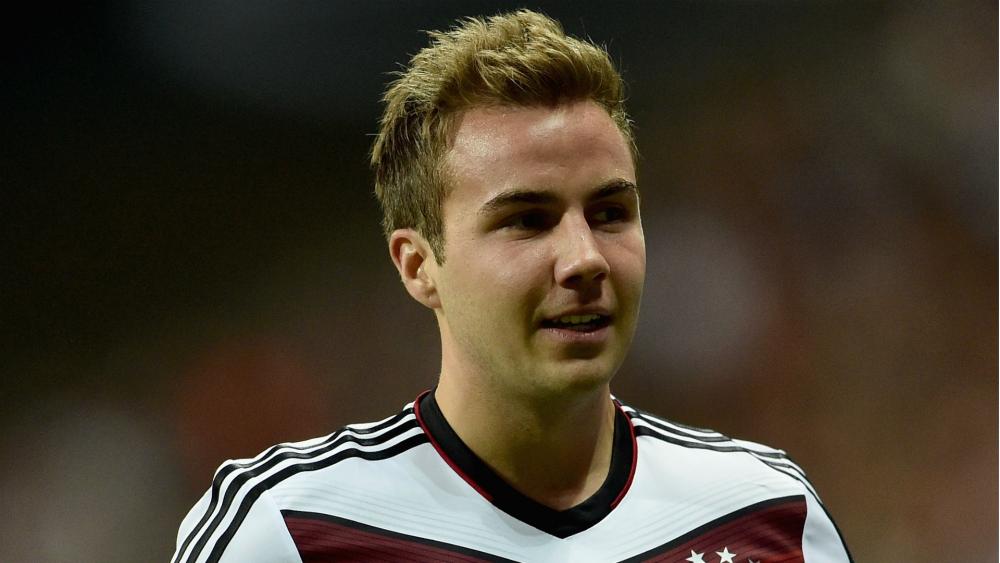He's building a hospital, a school and a mosque – Sadio Mané's incredible journey
The Liverpool forward has won African Footballer of the Year, a Champions League, and the Premier League glory. Now he's lifted the Africa Cup of Nations. This is his story

This feature first appeared in the March 2020 issue of FourFourTwo
It’s an odd marker of Sadio Mané’s development as a footballer that he doesn’t flog himself as hard as he used to. As a teenager, he would chance detection by the formidable Madame Brech, Metz’s academy matron, to sneak out at dawn for an hour’s run. In Austria, he could watch football on TV with a pal for only so long; he’d sourced weights and a mat from Red Bull Salzburg for his pokey flat, and would soon jump up to manically pump iron. And for his holiday back home in Senegal? Passport – check. Luggage – check. Personal trainer – check. But the modern Mané knows how to work himself judiciously. At Metz, he was playing only every couple of weeks. At Liverpool, as matches flash by at three-day intervals, he recuperates carefully, as befits the educated professional he has become.
And he has an earnest message for the average teenager who prefers a little extra duvet time. “That’s a real mistake,” insists Mané. “When you’re young, that’s when you have to make the most of it; to work even harder. Everything that’s happened to me is the result of hard work.”
Here lies the explanation for how someone universally described as smiley, reserved and humble – even adorable – has wound up in more than a few tiffs. Pierre Bouby, a senior team-mate of Mané at Metz, later recalled: “He was a well brought-up boy, endearing, but you didn’t stand in his way because he didn’t have the time. You could tell that he wasn’t there to mess about. His strength of character is very pronounced, and that, too, is a strength of his. Wherever Sadio is, he always asserts himself.”
Mané’s youth coach at Metz, Olivier Perrin, who also later coached his nursery club in Senegal, described him as possessing “an internal strength which comes from within himself, but also from his background and the journey he has been on”.
Mané has already funded a new school, a hospital and a mosque in Bambali. The only problem is that too many children are late to school because they’re out playing football in one of the 300 Liverpool shirts that he sent over
“For the Senegalese,” said Perrin, “success is also linked to the family. You have to do everything for them, and that goes beyond what we can comprehend in Europe. That’s a source of motivation we don’t have.” As Mané himself once asserted: “You can say, ‘I don’t know where I’m going’, but you can’t say, ‘I don’t know where I’ve come from’. You must always think of those who brought you up and helped you.”
The village of Bambali lies on one of the vast, lazy curves of the Casamance River in south-west Senegal. For Mané, this is home. Its streets are covered in posters calling him “the pride of the nation”. Moussa Ndione, schoolteacher and coach of Mané’s first club, Mansacounda de Bambali, complains that their pitch is “uneven, crisscrossed by children and cows, and gets requisitioned during circumcision time”. He may not have to put up with it for much longer, though, seeing as Mané has already funded a new school, a hospital and a mosque in Bambali, alongside the thatched and tin roofs. The only problem is that too many children are late to school because they’re out trying to become the next Sadio Mané, clad in one of the 300 Liverpool shirts that he sent over. Even a sermon from the man himself hasn’t been able to stop that.
Get FourFourTwo Newsletter
The best features, fun and footballing quizzes, straight to your inbox every week.
The mosque features a portrait of Mané’s father, an imam, who died when Sadio was 11. He was raised by his mother, his uncle and his grandmother. His extended family – some 45 strong – now live in a mansion he had built for them.
His aunt, Tiana Cissé, is indignant that “people” suggest the family tried to prevent Mané from playing football – which rather ignores the fact that he is the main person who says so. Sadio once recounted coming home with a friend to avoid being clouted for playing football instead of studying at school (something he describes as part of his education, for which “I thank my mum every day”). His uncle, Ibrahim Touré, recalls shouting at Mané for refusing to help with the harvest: “He said, ‘You’re wearing me out, Uncle. I’m going to be an international footballer and I’ll make it so you don’t work in the fields any more.’ I told him, ‘Bulls**t! How will you succeed? I’m not rich. I don’t have any money to send you for training.’ I didn’t believe in his dream.”
When he was nearly 16, Mané ran away to Dakar, Senegal’s capital, in order to find football fame. In true teenage style, he’d hidden his sports bag in the long grass outside his house the previous night, and told only his best friend. His misadventure was soon discovered and curtailed, but he won permission for a real tilt at his dream in exchange for finishing the school year.
In 2009, he was seen playing in regional championships in Mbour, 80km outside of Dakar, and invited to a trial with hundreds of other youngsters at the capital’s police college. The way Mané tells it, “an old man” expressed surprise that he had turned up in his ripped, stitched-up boots and a rather curious-looking pair of shorts. But Abdou Diatta, veteran scout at the Génération Foot academy, insists his initial scepticism was, in fact, due to Mané’s extreme reticence. He agrees, though, that he was sold the instant he saw the youngster in action. Mané was accepted by the academy and en route to becoming an international footballer – yet he still returned home to work in the rice and peanut fields every summer.
“I saw in him the qualities of a top-level player – speed, dribbling, an ability to beat defences, link-up play,” said Jules Boucher, former Senegal midfielder, then Génération Foot coach. He duly put Mané on the wing, and the academy – founded nine years earlier by ex-pro Mady Touré “with a sheet of paper, a table, two balls and some ideas” – knew they had a diamond.
Boys who play at Génération Foot dream of playing for FC Metz. The clubs have been in partnership since 2003. Mané wasn’t left star-gazing for long: in late 2009, he joined an academy trip to Metz, close to France’s borders with Germany and Luxembourg. By January 2010, the 18-year-old was living in the ancient city permanently.
Besides the shock of a northern European winter, Mané’s first problem was the injury he was hiding for fear of ruining his move. “It took me two and a half months to notice, because he didn’t say anything,” said Perrin. “He had a hellish groin injury. We operated and things went better after that.”
In autumn 2011, Metz’s midfield stalwart, David Fleurival, spent a spare Saturday off due to suspension playing for the reserves. Afterwards, he went up to coach Dominique Bijotat and informed him of the starlet who should be training with his first team.
“Perrin had told us that a phenomenon was coming to Metz, but we had no idea he was that good,” former Metz defender Gaetan Bussmann tells FourFourTwo. “I remember how happy Sadio always looked – it was like he never felt the pressure. He plays the same now as when he arrived in France. Physically he is more developed, of course, and he can play 90 minutes at full intensity. The biggest difference, though, is how explosive he is on the pitch, especially in one-on-one situations.
“I remember one reserve match against Jura Sud in November 2011 – it was so cold and foggy that you couldn’t see 20 metres in front of you. The game was almost cancelled. Mané was sat on the bench and he came on. We couldn’t see the opponents properly; we just said, ‘Give the ball to Sadio.’ We wanted him to dribble past opponents and score. He didn’t in the end, but he caused mayhem. We ended up winning 2-1.”
Mané’s first-team debut in Ligue 2 proved a peculiar turning point. He emerged at the Stade Saint-Symphorien with 15 minutes left of Metz vs Bastia on January 14, 2012, but Les Grenats lost to a late goal. After that, the youngster got better and better while Metz fared from bad to worse. They went another 10 games without a win, and Mané just had time to score his first goal, in May’s 5-2 loss to Guingamp, before Metz subsided into the Championnat National – France’s third tier – for the first time in their history.
Imagine informing a 20-year-old Mané, as he gazed out of the window of Metz’s team bus in late August 2012, that his next trip to France would come en route to winning the Champions League. Back then, Sadio was steeling himself for a four-and-a-half-hour trip to Rouen, and a game against Quevilly, when he was asked to step off the coach. Soon he was on a plane carrying him a little further in the other direction – as he found out once he’d Googled Salzburg.
This was Mané’s first experience of being a financial commodity. That summer, he had reached the quarter-finals of London’s 2012 Olympics with Senegal, and now knows his displays impressed Gerard Houllier, who had tipped off his new employers, Red Bull. Metz figured a €2.5 million price tag would prove sufficient to deter suitors from buying a player whose sum experience amounted to 19 matches in Ligue 2. They were wrong. Ralf Rangnick, Red Bull Salzburg’s technical director, was among those whose appetite was whetted by seeing Mané’s performance against Tours in August. Suddenly, Metz had several offers of €2.5m on the table, so they upped their asking price to €4m. Swallowing hard, Salzburg eventually stumped up the readies, and relegated Metz were overcome by financial pragmatism.
“We saw a great deal of potential in Sadio,” Salzburg’s sporting director, Christoph Freund – who has since waved Naby Keita, Takumi Minamino and Erling Braut Haaland on to big things – tells FFT. “We saw his movement, his speed and that he was very hungry to score. When we met him then, he was really clear that he wanted to make the next step.
“It wasn’t easy, though. It was a different language, a different culture. When you sign a player, you see the outstanding attributes but you can’t be 100 per cent sure that they will develop exactly how you want them to. When Sadio started here, his progress was very interesting.”
It was almost as if Houllier’s involvement had bumped young Mané into the path of a Merseyside tractor beam. The man who had just taken over as Salzburg boss, Roger Schmidt, dreamed of schooling the side to play like Jurgen Klopp’s Borussia Dortmund – and Mané had to adapt fast.
“Sadio worked a lot tactically, mainly in learning gegenpressing to recover the ball as soon as possible after we lost possession,” Salzburg centre-back Andre Ramalho tells FFT. Schmidt went further, crediting Mané with making his transitions possible thanks to a ready grasp of tactics and altruistic play.
“He was such a great person who had an unbelievable heart,” continues Ramalho. “Brazilians and Africans almost always get along, so he and I were another example of that happiness to be alive. There were some people at the club who helped him off the pitch, and they have stayed in touch since.”
Mustapha Mesloub was what Salzburg term an ‘integration manager’ or, in Mané’s words, “like my real family”. Mesloub translated for Mané and also ate with him; Mesloub’s wife looked after Mané and washed his clothes. “I will never forget that passage of my life,” the forward has said.

“Sadio’s first year at the club was also the first for our new director, Ralf Rangnick, and the coach, Roger Schmidt,” adds Ramalho. “In terms of results, it wasn’t the best – we lost the Champions League qualifier, finished second in the league and were knocked out of the cup in the semi-finals. However, the next year, everything clicked and everyone reached a higher level – Mané included.”
In 2013-14, Salzburg waltzed through the Europa League group stage with six victories from six, but a January 2014 friendly against Pep Guardiola’s Bayern Munich caused the biggest stir – the Red Bull Arena sold out for the first time since Euro 2008. Ramalho calls the 3-0 win an “unforgettable match”.
“We even missed a penalty!” the defender says, laughing. “What Mané did in that game was outstanding. I felt sorry for the Bayern defenders that day – he was unstoppable.” Mané netted the first goal after 13 minutes, won the penalty for the second and set up the third. Guardiola received what he called “a good lesson” on his 43rd birthday.
Salzburg soon pulled off another thrilling Dortmund impression in the Europa League’s first knockout round, annihilating Ajax 6-1 on aggregate with Kevin Kampl running riot and Mané scoring replica goals in each leg. Dortmund’s manager was finally granted an audience with him in 2014, but Mané says that Klopp – who deemed his failure to sign Mané at 22 “one of my biggest mistakes” – fell victim to market forces.
Salzburg wanted Mané to spearhead their 2014/15 Champions League campaign, but Rangnick then found himself up against the player’s Mr Hyde: Mané skipped training and even a Champions League play-off second leg, which Salzburg lost 3-0 in Malmo and went out 4-2 on aggregate (guess who got the blame). After the stoush descended into insults, Red Bull were determined to sell him to the highest bidders: Spartak Moscow. The player was desperate to join Dortmund. As each side dug in, Southampton appeared on the horizon as a last resort.
“I wouldn’t say that he gave off that vibe,” says Adam Leitch, former chief sports writer at the Southern Daily Echo. “A lot of players around that era were using Southampton as a stepping stone – they’d already sold a lot of successful players, especially to Liverpool. There were a lot of players trying their best for Southampton but really they were trying their best for themselves.”
Mané himself summarised his trajectory rather neatly: “At Salzburg, I discovered real football. At Southampton, I put things into place. After that, I was ready to sign for one of Europe’s big clubs.”
Leitch doesn’t remember the Senegalese as quite having things in place, though. “He had a chaos factor – to the opposition but also to his own team,” he tells FFT. “It makes me smile now to hear people make out that Virgil van Dijk has come on leaps and bounds at Anfield, when actually he was that good at Southampton, too. With Mané, Liverpool bought on potential rather than what he had there and then. Sadio would have one game where he was an absolute world-beater, and another where you thought, ‘For goodness’ sake, what’s going on?’ At Southampton he was guilty of some horrific howlers in front of goal – either terrible misses or bad decisions.”
Mané failed to score or assist in 46 of his 67 Premier League games for Southampton, and in his first season he had a tendency to fade out of matches. But everything was on show when he faced Aston Villa at St Mary’s on May 16, 2015. He scored what is still the fastest Premier League hat-trick: three goals in two minutes and 56 seconds. Mané called the feat “a trigger”, explaining, “I told myself I no longer had the right to make mistakes. I told myself I had passed another stage and that from now, anything was possible.”
Mané was gaining tactical elasticity. When Manchester United snatched a 3-2 win at St Mary’s in September 2015, he nonetheless outshone his opposite No.10, Wayne Rooney. At Stamford Bridge in October, he received praise from Saints manager Ronald Koeman for outfoxing the Chelsea backline with his positional interplay, scoring in a 3-1 success. With Koeman steering and Mané fizzing, the Saints recorded league highs of 7th and 6th.
However, the latter wasn’t spared his boss’ wrath. Indeed, Mané was benched for a 1-0 defeat at Norwich in January 2016, having been late to a team meeting. Leitch says the reason was a little more innocent. “Perhaps Mané wasn’t always the most prepared of characters, but I later heard that he’d simply got lost in the hotel, trying to find the right room,” he explains. “But Koeman didn’t like it and told him to get out. He never wanted any player to think that they could abide by different rules to everyone else.”
Regardless, Mané’s stock was rising – and Klopp hadn’t forgotten about him.

Mané has since admitted he came close to leaving Southampton for Manchester United, but Liverpool got their man in the summer of 2016. Initially, a fee of £34m appeared risky, and although Mané did well from the off, it was Philippe Coutinho’s move to Barcelona in January 2018 that changed everything. Klopp said that he’d held private talks with Mané to help his confidence following a poor showing in the previous month’s Merseyside derby, leading the forward to reveal, “Klopp said he had to rotate his squad. There was also the fact Coutinho was close to leaving and he didn’t want to tell me straight out. He said he had confidence in me, and that with time I would play to the point of exhaustion. Even so, I told him I wanted to play because the [African] Ballon d’Or was in the balance between Mohamed Salah and me.”
If Mané’s quickfire hat-trick was his ‘trigger’ with Southampton, Coutinho’s exit had the same effect at Liverpool. Switching flanks to make way for Salah, Mané now had his own breathing space. Andrew Robertson shooting up the left touchline meant he could venture more centrally and blend his No.10 qualities into his game. When Mané was eventually named African Player of the Year in January, it wasn’t just down to his more rounded play.
“Before, he was only Mané the showman, trying to create the best assists,” long-time Senegal team-mate, Cheikhou Kouyate, tells FFT. “Now he knows it’s his responsibility to score. Now he’s the full package, because he is getting assists and scoring goals. He’s also become a leader. I remember the shy and unassuming Sadio; now, he talks a lot on the pitch. Off it, he is adorable, but on the pitch he is a warrior.”
Just under a quarter of Mané’s shots and goals last season came in the last 15 minutes of matches. He also took fewer shots than in 2017/18 but from better positions, allowing him to be more clinical.
“It makes you wonder why a player like him hasn’t won a major individual trophy yet, like Lionel Messi or Virgil van Dijk,” continues Kouyate. “For me, Sadio was ahead of them both last year. I don’t think it’s fair. He was the [joint] best scorer in the Premier League last season, without taking any penalties. He also won the Champions League and was an Africa Cup of Nations runner-up with Senegal. But also: just look at the way he plays.” Former Senegal coach Amara Traore put forward a possible reason why Salah pipped Mané in the voting for 2018 African Player of the Year. “He was selfish and Sadio was altruistic,” said Traore.
“That goal he scored at Bayern Munich in the quarter-finals of the Champions League – not so long ago, he would have passed it. But he’s taken responsibility. He must now continue that way, and not let his altruism get the better of him.”
He’s certainly getting there – last season, Mané scored 22 Premier League goals and assisted only one. Now, though, egotism and selflessness appear to be cohabiting happily – at just over halfway through this campaign, he had notched 13 goals and added seven assists at home and in Europe.
Gerard Houllier claims he recommended Mané to Liverpool when he was still at Metz, but you do wonder about the timing of such a transfer. There’s a phrase in French, ‘brûler les étapes’, which literally means ‘to burn through phases’ – or to advance with undue haste. Jurgen Klopp knows that patience is a virtue. As Sadio Mané’s progression shows, the best things take time.
Subscribe to FourFourTwo today and save over a third on shop price
ALSO READ
SPURDER-MAN It's official: Son Heung-min is in the Marvel Cinematic Universe
CANTONA WEEK Why Eric Cantona meant so much to Manchester United fans
